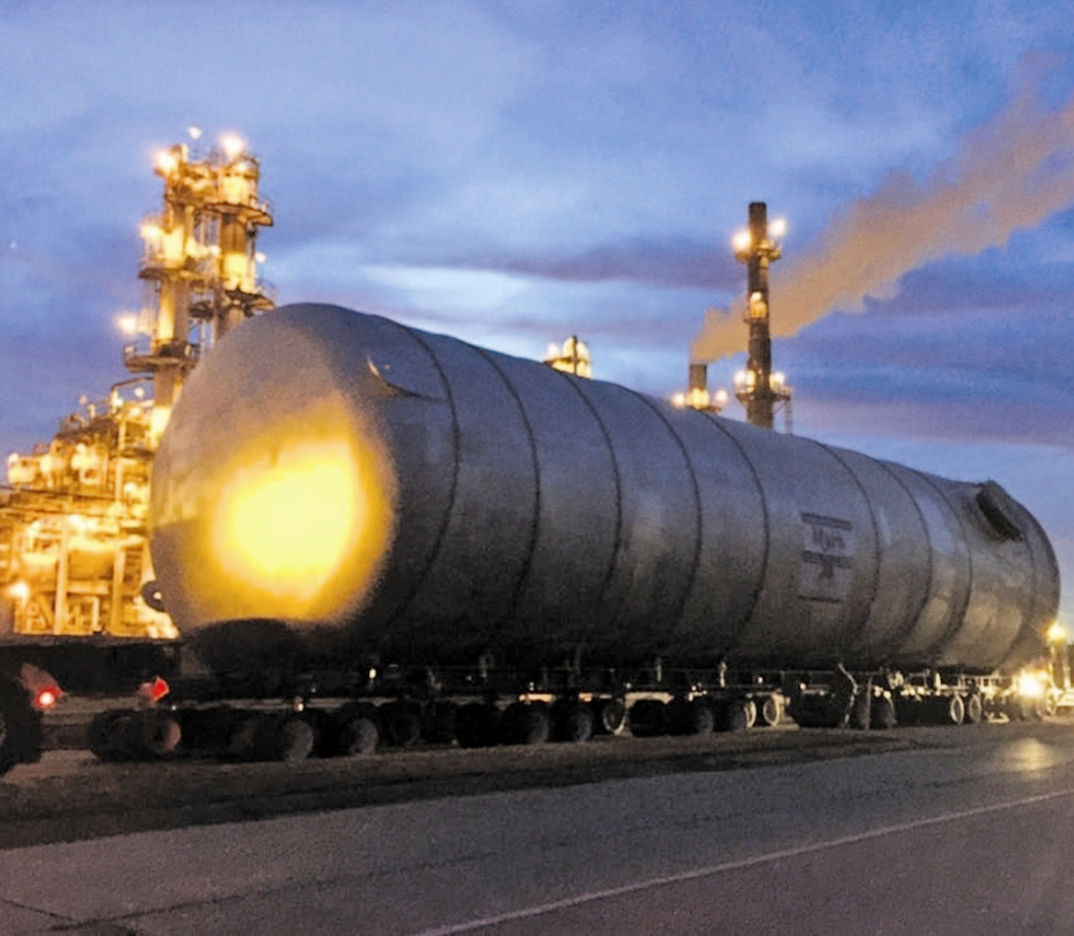CAMP MINDEN — The incinerator that will be used to dispose of millions of pounds of M6 propellant currently stored at Camp Minden is on its way to Webster Parish.

The incinerator as it was transported from MJ&H Fabrication, Inc. to the Port of Catoosa in Oklahoma. Courtesy Photo/MJ&H Fabrication
The incinerator began its journey on Dec. 14 from MJ&H Fabrication, Inc in Ponca City, Oklahoma.

Crews work to move power lines and stoplights to clear a path for the 436,000 pound, 27.5 foot high and 180-foot long explosion chamber to travel to the Port of Catoosa in Oklahoma on Dec. 14. Rolf Clements/The Ponca City News
After days of snaking through the streets of Oklahoma, Gary Harvey, president of MJ&H, said the chamber was loaded onto a barge Tuesday, Dec. 22 at the Port of Catoosa in Tulsa, Oklahoma.
The massive chamber is expected to take 20 days to travel down the Red River to the Natchitoches Parish Port.
The chamber, which is more than 100 feet long and weighs 436,000 pounds, will then be unloaded and driven to Camp Minden. It’s expected to arrive at the destruction site on Jan. 8, 2016.
Officials have said there will be traffic delays as the incinerator is trucked north. It took four days to travel 65 miles in Oklahoma on a special trailer that had 96 wheels.
The State of Louisiana entered into a contract with Explosive Service International on June 17, 2015, to conduct the destruction of approximately 15,687,247 pounds of M6 propellant and approximately 320,890 pounds of Clean Burning Igniter currently stored at Camp Minden.
The initial contract was for $19,292,648 million and is expected to be increased to $34-$35 million to account for the additional requirements set forth by the Environmental Protection Agency.
The amount is based on receipt of additional funding that comes from the U.S. Treasury’s Judgment Fund on behalf of the U.S. Army for the work, National Guard officials said.
The incinerator will be part of a contained burn chamber destruction method in which the chamber will be connected to an environmental system.
M6 will be loaded into the chamber and burned in increments of up to 880 pounds at a time, Dean Schellhase, with Explosive Service International said.
Once the M6 goes through the burn chamber and the pollution abatement system, he says the air coming from the stacks will be cleaner than hospital air.
Feb. 27, 2016 is the target date for the first live fire to burn the propellant. The project is expected to be completed in February 2017.

